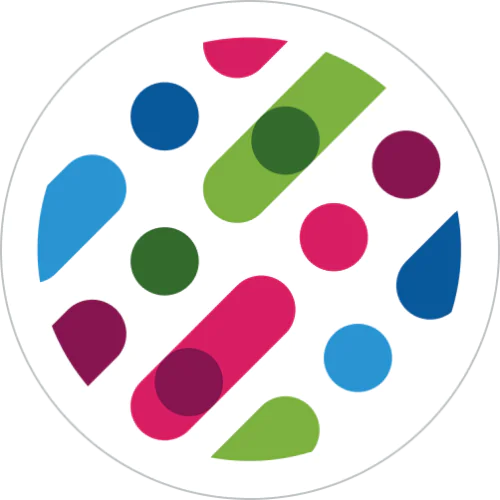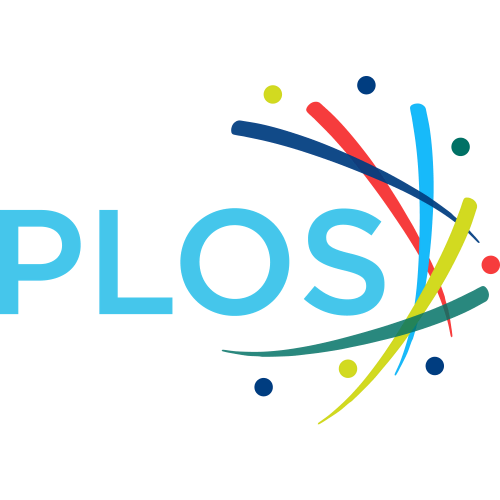Open Access


Nucleic Acids Research, volume 41, issue 6, pages 3563-3575
Disclosure of a structural milieu for the proximity ligation reveals the elusive nature of an active chromatin hub
Publication type: Journal Article
Publication date: 2013-02-07
Journal:
Nucleic Acids Research
Quartile SCImago
Q1
Quartile WOS
Q1
Impact factor: 14.9
ISSN: 03051048, 13624962
PubMed ID:
23396278
Genetics
Abstract
The current progress in the study of the spatial organization of interphase chromosomes became possible owing to the development of the chromosome conformation capture (3C) protocol. The crucial step of this protocol is the proximity ligation—preferential ligation of DNA fragments assumed to be joined within nuclei by protein bridges and solubilized as a common complex after formaldehyde cross-linking and DNA cleavage. Here, we show that a substantial, and in some cases the major, part of DNA is not solubilized from cross-linked nuclei treated with restriction endonuclease(s) and sodium dodecyl sulphate and that this treatment neither causes lysis of the nucleus nor drastically affects its internal organization. Analysis of the ligation frequencies of the mouse β-globin gene domain DNA fragments demonstrated that the previously reported 3C signals were generated predominantly, if not exclusively, in the insoluble portion of the 3C material. The proximity ligation thus occurs within the cross-linked chromatin cage in non-lysed nuclei. The finding does not compromise the 3C protocol but allows the consideration of an active chromatin hub as a folded chromatin domain or a nuclear compartment rather than a rigid complex of regulatory elements.
Citations by journals
|
1
2
3
4
|
|
|
Nature Methods

|

Nature Methods
4 publications, 5.19%
|
|
Molecular Cell

|

Molecular Cell
3 publications, 3.9%
|
|
Molecular Biology

|

Molecular Biology
3 publications, 3.9%
|
|
Methods in Molecular Biology

|

Methods in Molecular Biology
3 publications, 3.9%
|
|
Nucleic Acids Research

|

Nucleic Acids Research
3 publications, 3.9%
|
|
Trends in Genetics

|

Trends in Genetics
2 publications, 2.6%
|
|
Nature

|

Nature
2 publications, 2.6%
|
|
Cell

|

Cell
2 publications, 2.6%
|
|
FEBS Letters

|

FEBS Letters
2 publications, 2.6%
|
|
eLife

|

eLife
2 publications, 2.6%
|
|
Genes and Development

|

Genes and Development
2 publications, 2.6%
|
|
Frontiers in Genetics

|

Frontiers in Genetics
1 publication, 1.3%
|
|
Development (Cambridge)

|

Development (Cambridge)
1 publication, 1.3%
|
|
Essays in Biochemistry

|

Essays in Biochemistry
1 publication, 1.3%
|
|
Toxins

|

Toxins
1 publication, 1.3%
|
|
Cells

|

Cells
1 publication, 1.3%
|
|
Biology

|

Biology
1 publication, 1.3%
|
|
Nature Communications

|

Nature Communications
1 publication, 1.3%
|
|
Epigenetics and Chromatin

|

Epigenetics and Chromatin
1 publication, 1.3%
|
|
Histochemistry and Cell Biology

|

Histochemistry and Cell Biology
1 publication, 1.3%
|
|
Chromosoma

|

Chromosoma
1 publication, 1.3%
|
|
Scientific Reports

|

Scientific Reports
1 publication, 1.3%
|
|
Molecular Psychiatry

|

Molecular Psychiatry
1 publication, 1.3%
|
|
Nature Protocols

|

Nature Protocols
1 publication, 1.3%
|
|
Nature Structural and Molecular Biology

|

Nature Structural and Molecular Biology
1 publication, 1.3%
|
|
Nature Reviews Genetics

|

Nature Reviews Genetics
1 publication, 1.3%
|
|
Nature Reviews Molecular Cell Biology

|

Nature Reviews Molecular Cell Biology
1 publication, 1.3%
|
|
Cell Biology and Toxicology

|

Cell Biology and Toxicology
1 publication, 1.3%
|
|
Trends in Biotechnology

|

Trends in Biotechnology
1 publication, 1.3%
|
|
1
2
3
4
|
Citations by publishers
|
5
10
15
20
|
|
|
Springer Nature

|

Springer Nature
20 publications, 25.97%
|
|
Elsevier

|

Elsevier
12 publications, 15.58%
|
|
Wiley

|

Wiley
5 publications, 6.49%
|
|
Multidisciplinary Digital Publishing Institute (MDPI)

|

Multidisciplinary Digital Publishing Institute (MDPI)
4 publications, 5.19%
|
|
Oxford University Press

|

Oxford University Press
4 publications, 5.19%
|
|
Pleiades Publishing

|

Pleiades Publishing
3 publications, 3.9%
|
|
Public Library of Science (PLoS)

|

Public Library of Science (PLoS)
2 publications, 2.6%
|
|
Taylor & Francis

|

Taylor & Francis
2 publications, 2.6%
|
|
American Society for Microbiology

|

American Society for Microbiology
2 publications, 2.6%
|
|
eLife Sciences Publications

|

eLife Sciences Publications
2 publications, 2.6%
|
|
Cold Spring Harbor Laboratory

|

Cold Spring Harbor Laboratory
2 publications, 2.6%
|
|
Frontiers Media S.A.

|

Frontiers Media S.A.
1 publication, 1.3%
|
|
The Company of Biologists

|

The Company of Biologists
1 publication, 1.3%
|
|
Portland Press

|

Portland Press
1 publication, 1.3%
|
|
Rockefeller University Press

|

Rockefeller University Press
1 publication, 1.3%
|
|
5
10
15
20
|
- We do not take into account publications that without a DOI.
- Statistics recalculated only for publications connected to researchers, organizations and labs registered on the platform.
- Statistics recalculated weekly.
{"yearsCitations":{"type":"bar","data":{"show":true,"labels":[2013,2014,2015,2016,2017,2018,2019,2020,2021,2022,2023],"ids":[0,0,0,0,0,0,0,0,0,0,0],"codes":[0,0,0,0,0,0,0,0,0,0,0],"imageUrls":["","","","","","","","","","",""],"datasets":[{"label":"Citations number","data":[3,9,13,13,10,6,5,9,4,3,2],"backgroundColor":["#3B82F6","#3B82F6","#3B82F6","#3B82F6","#3B82F6","#3B82F6","#3B82F6","#3B82F6","#3B82F6","#3B82F6","#3B82F6"],"percentage":["3.9","11.69","16.88","16.88","12.99","7.79","6.49","11.69","5.19","3.9","2.6"],"barThickness":null}]},"options":{"indexAxis":"x","maintainAspectRatio":true,"scales":{"y":{"ticks":{"precision":0,"autoSkip":false,"font":{"family":"Montserrat"},"color":"#000000"}},"x":{"ticks":{"stepSize":1,"precision":0,"font":{"family":"Montserrat"},"color":"#000000"}}},"plugins":{"legend":{"position":"top","labels":{"font":{"family":"Montserrat"},"color":"#000000"}},"title":{"display":true,"text":"Citations per year","font":{"size":24,"family":"Montserrat","weight":600},"color":"#000000"}}}},"journals":{"type":"bar","data":{"show":true,"labels":["Nature Methods","Molecular Cell","Molecular Biology","Methods in Molecular Biology","Nucleic Acids Research","Trends in Genetics","Nature","Cell","FEBS Letters","eLife","Genes and Development","Frontiers in Genetics","Development (Cambridge)","Essays in Biochemistry","Toxins","Cells","Biology","Nature Communications","Epigenetics and Chromatin","Histochemistry and Cell Biology","Chromosoma","Scientific Reports","Molecular Psychiatry","Nature Protocols","Nature Structural and Molecular Biology","Nature Reviews Genetics","Nature Reviews Molecular Cell Biology","Cell Biology and Toxicology","Trends in Biotechnology"],"ids":[14446,19820,1134,3516,23904,14739,14611,16552,405,24138,7332,13242,2238,7813,1464,25293,24144,3231,8992,9446,10452,13767,11800,21812,13408,13955,10207,667,17422],"codes":[0,0,0,0,0,0,0,0,0,0,0,0,0,0,0,0,0,0,0,0,0,0,0,0,0,0,0,0,0],"imageUrls":["\/storage\/images\/resized\/voXLqlsvTwv5p3iMQ8Dhs95nqB4AXOG7Taj7G4ra_medium.webp","\/storage\/images\/resized\/GDnYOu1UpMMfMMRV6Aqle4H0YLLsraeD9IP9qScG_medium.webp","\/storage\/images\/resized\/oZgeErrVFhuDksyqFURLvYS1wtVSBWczh001igGo_medium.webp","\/storage\/images\/resized\/voXLqlsvTwv5p3iMQ8Dhs95nqB4AXOG7Taj7G4ra_medium.webp","\/storage\/images\/resized\/yNSijlgQghQF53VZuyFLA30CKDe4j3HK74Vtpnxa_medium.webp","\/storage\/images\/resized\/GDnYOu1UpMMfMMRV6Aqle4H0YLLsraeD9IP9qScG_medium.webp","\/storage\/images\/resized\/voXLqlsvTwv5p3iMQ8Dhs95nqB4AXOG7Taj7G4ra_medium.webp","\/storage\/images\/resized\/GDnYOu1UpMMfMMRV6Aqle4H0YLLsraeD9IP9qScG_medium.webp","\/storage\/images\/resized\/bRyGpdm98BkAUYiK1YFNpl5Z7hPu6Gd87gbIeuG3_medium.webp","\/storage\/images\/resized\/eIZgkq1MRZyJ3hBkdupnUUv7wgB6zCl9D99SlPN5_medium.webp","\/storage\/images\/resized\/hg4jJjT8wVGtHstBCc0zk465Mg9pLx3G4odCDOqE_medium.webp","\/storage\/images\/resized\/4QWA67eqfcfyOiA8Wk7YnqroHFqQbTsmDJUYTCTg_medium.webp","\/storage\/images\/resized\/ko5EaisKGm66J1hHXtfEgVEeeWb9uOcMofpNuf0a_medium.webp","\/storage\/images\/resized\/nUqNrP9GnM1t0BrAIXp1LBodjU8aIJ2Fk4pLfGhZ_medium.webp","\/storage\/images\/resized\/MjH1ITP7lMYGxeqUZfkt2BnVLgjkk413jwBV97XX_medium.webp","\/storage\/images\/resized\/MjH1ITP7lMYGxeqUZfkt2BnVLgjkk413jwBV97XX_medium.webp","\/storage\/images\/resized\/MjH1ITP7lMYGxeqUZfkt2BnVLgjkk413jwBV97XX_medium.webp","\/storage\/images\/resized\/voXLqlsvTwv5p3iMQ8Dhs95nqB4AXOG7Taj7G4ra_medium.webp","\/storage\/images\/resized\/voXLqlsvTwv5p3iMQ8Dhs95nqB4AXOG7Taj7G4ra_medium.webp","\/storage\/images\/resized\/voXLqlsvTwv5p3iMQ8Dhs95nqB4AXOG7Taj7G4ra_medium.webp","\/storage\/images\/resized\/voXLqlsvTwv5p3iMQ8Dhs95nqB4AXOG7Taj7G4ra_medium.webp","\/storage\/images\/resized\/voXLqlsvTwv5p3iMQ8Dhs95nqB4AXOG7Taj7G4ra_medium.webp","\/storage\/images\/resized\/voXLqlsvTwv5p3iMQ8Dhs95nqB4AXOG7Taj7G4ra_medium.webp","\/storage\/images\/resized\/voXLqlsvTwv5p3iMQ8Dhs95nqB4AXOG7Taj7G4ra_medium.webp","\/storage\/images\/resized\/voXLqlsvTwv5p3iMQ8Dhs95nqB4AXOG7Taj7G4ra_medium.webp","\/storage\/images\/resized\/voXLqlsvTwv5p3iMQ8Dhs95nqB4AXOG7Taj7G4ra_medium.webp","\/storage\/images\/resized\/voXLqlsvTwv5p3iMQ8Dhs95nqB4AXOG7Taj7G4ra_medium.webp","\/storage\/images\/resized\/voXLqlsvTwv5p3iMQ8Dhs95nqB4AXOG7Taj7G4ra_medium.webp","\/storage\/images\/resized\/GDnYOu1UpMMfMMRV6Aqle4H0YLLsraeD9IP9qScG_medium.webp"],"datasets":[{"label":"","data":[4,3,3,3,3,2,2,2,2,2,2,1,1,1,1,1,1,1,1,1,1,1,1,1,1,1,1,1,1],"backgroundColor":["#3B82F6","#3B82F6","#3B82F6","#3B82F6","#3B82F6","#3B82F6","#3B82F6","#3B82F6","#3B82F6","#3B82F6","#3B82F6","#3B82F6","#3B82F6","#3B82F6","#3B82F6","#3B82F6","#3B82F6","#3B82F6","#3B82F6","#3B82F6","#3B82F6","#3B82F6","#3B82F6","#3B82F6","#3B82F6","#3B82F6","#3B82F6","#3B82F6","#3B82F6"],"percentage":[5.19,3.9,3.9,3.9,3.9,2.6,2.6,2.6,2.6,2.6,2.6,1.3,1.3,1.3,1.3,1.3,1.3,1.3,1.3,1.3,1.3,1.3,1.3,1.3,1.3,1.3,1.3,1.3,1.3],"barThickness":13}]},"options":{"indexAxis":"y","maintainAspectRatio":false,"scales":{"y":{"ticks":{"precision":0,"autoSkip":false,"font":{"family":"Montserrat"},"color":"#000000"}},"x":{"ticks":{"stepSize":null,"precision":0,"font":{"family":"Montserrat"},"color":"#000000"}}},"plugins":{"legend":{"position":"top","labels":{"font":{"family":"Montserrat"},"color":"#000000"}},"title":{"display":true,"text":"Journals","font":{"size":24,"family":"Montserrat","weight":600},"color":"#000000"}}}},"publishers":{"type":"bar","data":{"show":true,"labels":["Springer Nature","Elsevier","Wiley","Multidisciplinary Digital Publishing Institute (MDPI)","Oxford University Press","Pleiades Publishing","Public Library of Science (PLoS)","Taylor & Francis","American Society for Microbiology","eLife Sciences Publications","Cold Spring Harbor Laboratory","Frontiers Media S.A.","The Company of Biologists","Portland Press","Rockefeller University Press"],"ids":[8,17,11,202,19,101,344,18,142,6627,6909,208,872,801,22],"codes":[0,0,0,0,0,0,0,0,0,0,0,0,0,0,0],"imageUrls":["\/storage\/images\/resized\/voXLqlsvTwv5p3iMQ8Dhs95nqB4AXOG7Taj7G4ra_medium.webp","\/storage\/images\/resized\/GDnYOu1UpMMfMMRV6Aqle4H0YLLsraeD9IP9qScG_medium.webp","\/storage\/images\/resized\/bRyGpdm98BkAUYiK1YFNpl5Z7hPu6Gd87gbIeuG3_medium.webp","\/storage\/images\/resized\/MjH1ITP7lMYGxeqUZfkt2BnVLgjkk413jwBV97XX_medium.webp","\/storage\/images\/resized\/yNSijlgQghQF53VZuyFLA30CKDe4j3HK74Vtpnxa_medium.webp","\/storage\/images\/resized\/oZgeErrVFhuDksyqFURLvYS1wtVSBWczh001igGo_medium.webp","\/storage\/images\/resized\/PRGhlgB4OKRltSNtT39eA6wlnOTGRap1QQ6FQHih_medium.webp","\/storage\/images\/resized\/5YZtvLvkPZuc2JHOaZsjCvGSHFCuC3drUwN3YAc5_medium.webp","\/storage\/images\/resized\/VPE7q24PXoHr5SS2SqfEgxccSMUxWLfZINOX60uo_medium.webp","\/storage\/images\/resized\/eIZgkq1MRZyJ3hBkdupnUUv7wgB6zCl9D99SlPN5_medium.webp","\/storage\/images\/resized\/hg4jJjT8wVGtHstBCc0zk465Mg9pLx3G4odCDOqE_medium.webp","\/storage\/images\/resized\/4QWA67eqfcfyOiA8Wk7YnqroHFqQbTsmDJUYTCTg_medium.webp","\/storage\/images\/resized\/ko5EaisKGm66J1hHXtfEgVEeeWb9uOcMofpNuf0a_medium.webp","\/storage\/images\/resized\/nUqNrP9GnM1t0BrAIXp1LBodjU8aIJ2Fk4pLfGhZ_medium.webp","\/storage\/images\/resized\/lEA1FyUnFAZR1DchuczZi5bjAixG3TNeWVz6oF4R_medium.webp"],"datasets":[{"label":"","data":[20,12,5,4,4,3,2,2,2,2,2,1,1,1,1],"backgroundColor":["#3B82F6","#3B82F6","#3B82F6","#3B82F6","#3B82F6","#3B82F6","#3B82F6","#3B82F6","#3B82F6","#3B82F6","#3B82F6","#3B82F6","#3B82F6","#3B82F6","#3B82F6"],"percentage":[25.97,15.58,6.49,5.19,5.19,3.9,2.6,2.6,2.6,2.6,2.6,1.3,1.3,1.3,1.3],"barThickness":13}]},"options":{"indexAxis":"y","maintainAspectRatio":false,"scales":{"y":{"ticks":{"precision":0,"autoSkip":false,"font":{"family":"Montserrat"},"color":"#000000"}},"x":{"ticks":{"stepSize":null,"precision":0,"font":{"family":"Montserrat"},"color":"#000000"}}},"plugins":{"legend":{"position":"top","labels":{"font":{"family":"Montserrat"},"color":"#000000"}},"title":{"display":true,"text":"Publishers","font":{"size":24,"family":"Montserrat","weight":600},"color":"#000000"}}}}}
Metrics
Cite this
GOST |
RIS |
BibTex |
MLA
Cite this
GOST
Copy
Gavrilov A. et al. Disclosure of a structural milieu for the proximity ligation reveals the elusive nature of an active chromatin hub // Nucleic Acids Research. 2013. Vol. 41. No. 6. pp. 3563-3575.
GOST all authors (up to 50)
Copy
Gavrilov A., Gushchanskaya E. S., Strelkova O., Zhironkina O., Kireev I., Iarovaia O. V., Разин С. В. Disclosure of a structural milieu for the proximity ligation reveals the elusive nature of an active chromatin hub // Nucleic Acids Research. 2013. Vol. 41. No. 6. pp. 3563-3575.
Cite this
RIS
Copy
TY - JOUR
DO - 10.1093/NAR/GKT067
UR - https://doi.org/10.1093%2FNAR%2FGKT067
TI - Disclosure of a structural milieu for the proximity ligation reveals the elusive nature of an active chromatin hub
T2 - Nucleic Acids Research
AU - Gushchanskaya, Ekaterina S
AU - Zhironkina, Oksana
AU - Iarovaia, Olga V.
AU - Разин, С. В.
AU - Gavrilov, Alexey
AU - Strelkova, Olga
AU - Kireev, I.
PY - 2013
DA - 2013/02/07 00:00:00
PB - Oxford University Press
SP - 3563-3575
IS - 6
VL - 41
PMID - 23396278
SN - 0305-1048
SN - 1362-4962
ER -
Cite this
BibTex
Copy
@article{2013_Gavrilov,
author = {Ekaterina S Gushchanskaya and Oksana Zhironkina and Olga V. Iarovaia and С. В. Разин and Alexey Gavrilov and Olga Strelkova and I. Kireev},
title = {Disclosure of a structural milieu for the proximity ligation reveals the elusive nature of an active chromatin hub},
journal = {Nucleic Acids Research},
year = {2013},
volume = {41},
publisher = {Oxford University Press},
month = {feb},
url = {https://doi.org/10.1093%2FNAR%2FGKT067},
number = {6},
pages = {3563--3575},
doi = {10.1093/NAR/GKT067}
}
Cite this
MLA
Copy
Gavrilov, Alexey, et al. “Disclosure of a structural milieu for the proximity ligation reveals the elusive nature of an active chromatin hub.” Nucleic Acids Research, vol. 41, no. 6, Feb. 2013, pp. 3563-3575. https://doi.org/10.1093%2FNAR%2FGKT067.
